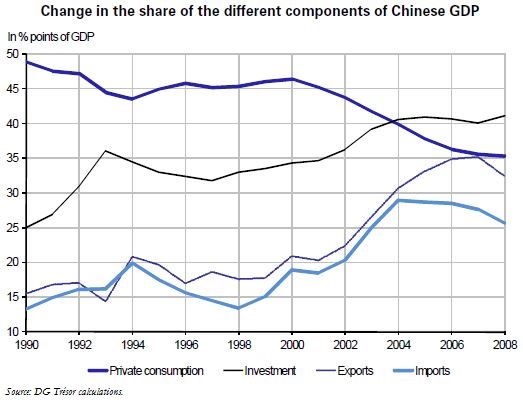Trésor-Economics No. 75 - A more balanced growth for China: challenges and prospects
Getting gradually a more balanced Chinese growth by fostering consumption is instrumental in achieving global economic stability. Il would help in lowering gradually China's current account surpluses and reducing global imbalances.
The stabilisation of China's working population between now and 2015, coupled with the drying up of much of the pool of rural migrants (mainly men aged 18-30), are expected to lead to labour shortages. These factors could push up wages, and could thus partly contribute to this rebalancing in the medium term.
The fiscal stimulus plan released in November 2008 focussed essentially on infrastructure, and the "universal" healthcare insurance plan, while a step in the right direction, relies probably too heavily on public investment (hospital building in the main place).
The structural reforms required to bring about this rebalancing are pretty well identified. They consist notably in: (i) improving the redistribution of company profits and a nominal appreciation of the currency, so as to boost Chinese consumers' purchasing power; (ii) better welfare policies, in order to reduce precautionary savings; and (iii) developing and liberalising the financial markets, to enable households and SMEs to gain access to them.
